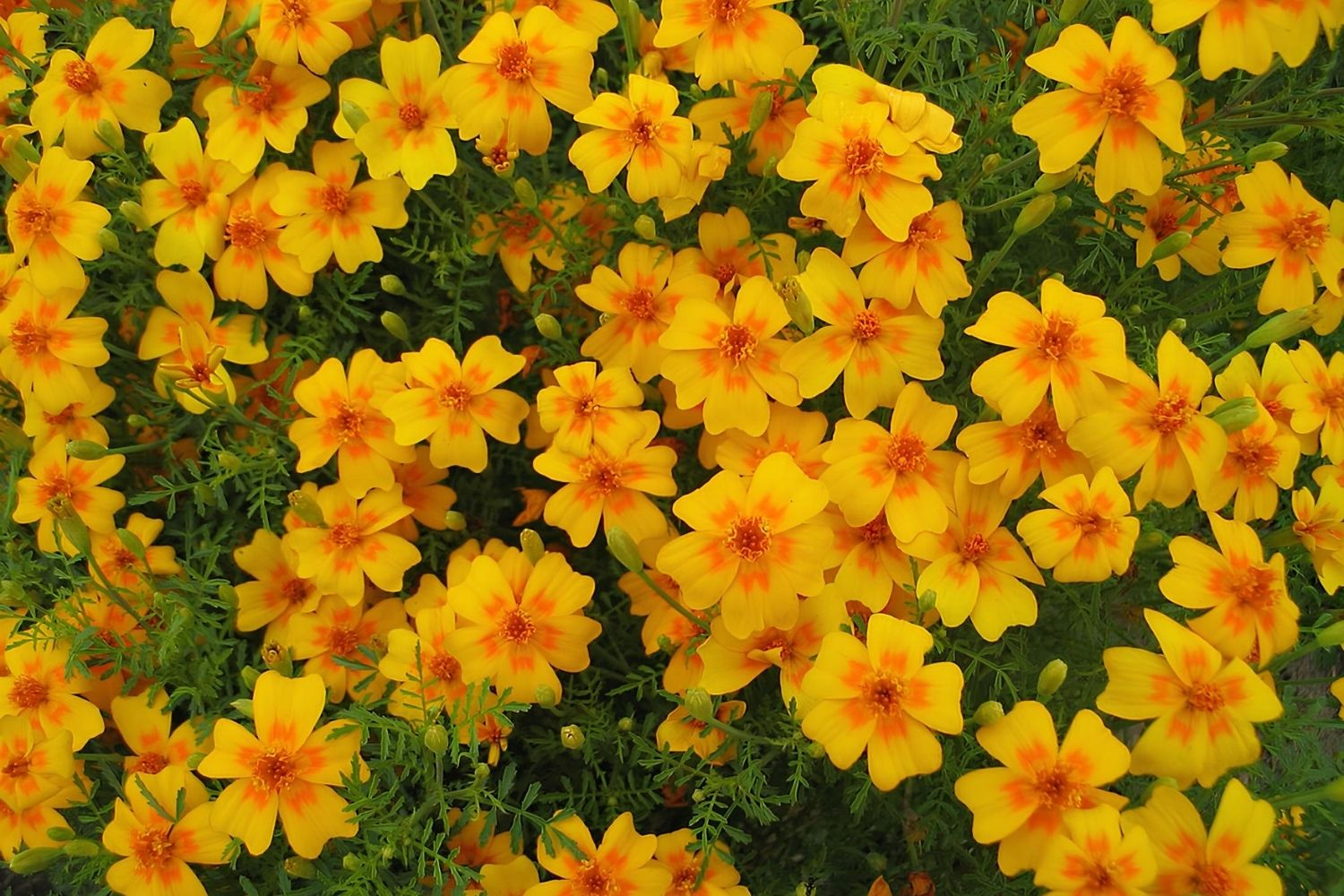
Tagetes, commonly known as marigolds, are vibrant, sun-loving flowers that brighten gardens worldwide. But did you know these cheerful blooms have a rich history and surprising uses? Originating from Mexico and Central America, marigolds were revered by ancient civilizations like the Aztecs for their medicinal properties and spiritual significance. Today, they’re not just garden staples; they play roles in pest control, culinary arts, and even skincare. Marigolds are also symbols of celebration in festivals like Mexico’s Day of the Dead. Whether you’re a gardening enthusiast or just curious, these 31 facts about Tagetes will surely surprise you.
What is Tagetes?
Tagetes, commonly known as marigolds, are vibrant flowers that brighten gardens worldwide. These plants belong to the sunflower family and are cherished for their beauty and versatility. Let's dive into some fascinating facts about these colorful blooms.
-
Tagetes are native to Mexico and Central America, where they have been cultivated for centuries.
-
The name "Tagetes" comes from the Etruscan god Tages, symbolizing wisdom and beauty.
-
There are over 50 species of Tagetes, each with unique characteristics and colors.
-
Marigolds are known for their bright yellow, orange, and red hues, making them popular in gardens and floral arrangements.
-
These flowers are annuals, meaning they complete their life cycle in one growing season.
Historical Significance of Tagetes
Tagetes have played a significant role in various cultures throughout history. Their vibrant colors and unique properties have made them valuable in rituals, medicine, and more.
-
In ancient Aztec culture, marigolds were used in religious ceremonies and as offerings to the gods.
-
The Aztecs also believed that marigolds had protective properties and used them to ward off evil spirits.
-
During the Mexican holiday Dia de los Muertos (Day of the Dead), marigolds are used to honor deceased loved ones.
-
In Hindu culture, marigolds are used in religious ceremonies and festivals, symbolizing purity and devotion.
-
Marigold garlands are often used in Indian weddings to bless the couple and bring good fortune.
Tagetes in Medicine and Health
Beyond their beauty, Tagetes have been used for their medicinal properties. These flowers contain compounds that can benefit health in various ways.
-
Tagetes oil, extracted from the flowers, has antimicrobial and antifungal properties.
-
The oil is also used in aromatherapy to relieve stress and anxiety.
-
In traditional medicine, marigold extracts have been used to treat skin conditions like eczema and wounds.
-
Tagetes contain lutein, an antioxidant that supports eye health and reduces the risk of cataracts.
-
Some studies suggest that marigold extracts can help reduce inflammation and pain.
Tagetes in Agriculture
Tagetes are not just pretty flowers; they also play a crucial role in agriculture. Their unique properties can benefit crops and soil health.
-
Marigolds are known for their ability to repel pests like nematodes, aphids, and whiteflies.
-
Planting marigolds alongside vegetables can help protect crops from harmful insects.
-
The roots of Tagetes release compounds that suppress the growth of certain soil-borne pathogens.
-
Marigolds can improve soil health by adding organic matter and nutrients when they decompose.
-
These flowers are often used in companion planting to enhance the growth and health of neighboring plants.
Fun Facts About Tagetes
Tagetes have some quirky and fun facts that make them even more interesting. These tidbits highlight the unique characteristics and uses of marigolds.
-
Marigold petals are edible and can be used to add color and flavor to salads and dishes.
-
The petals are sometimes used as a natural dye for fabrics and cosmetics.
-
Tagetes are often used in perfumes and cosmetics for their pleasant scent.
-
Some species of marigolds are used in poultry feed to enhance the color of egg yolks.
-
Marigolds are known to attract beneficial insects like ladybugs and bees, which help pollinate plants.
Growing and Caring for Tagetes
Growing Tagetes is relatively easy, making them a favorite among gardeners. Here are some tips and facts about cultivating these beautiful flowers.
-
Marigolds thrive in full sun and well-drained soil.
-
They are drought-tolerant and can withstand hot, dry conditions.
-
Tagetes can be grown from seeds, which should be sown after the last frost.
-
Deadheading, or removing spent flowers, encourages more blooms and prolongs the flowering season.
-
Marigolds are relatively pest-resistant, but they can occasionally attract spider mites and slugs.
-
These flowers can be grown in containers, making them versatile for small spaces and urban gardens.
The Final Petal
Tagetes, or marigolds, are more than just pretty flowers. They’ve got a rich history, practical uses, and some surprising benefits. From ancient Aztec rituals to modern gardens, these vibrant blooms have made their mark. They’re not just eye candy; they help repel pests, improve soil health, and even have medicinal properties. Plus, they’re easy to grow, making them a favorite for both novice and seasoned gardeners.
Whether you’re looking to add a splash of color to your garden or seeking natural pest control, marigolds are a fantastic choice. Their versatility and resilience make them a valuable addition to any green space. So next time you see these bright flowers, remember there’s more to them than meets the eye. Happy gardening!
Was this page helpful?
Our commitment to delivering trustworthy and engaging content is at the heart of what we do. Each fact on our site is contributed by real users like you, bringing a wealth of diverse insights and information. To ensure the highest standards of accuracy and reliability, our dedicated editors meticulously review each submission. This process guarantees that the facts we share are not only fascinating but also credible. Trust in our commitment to quality and authenticity as you explore and learn with us.
